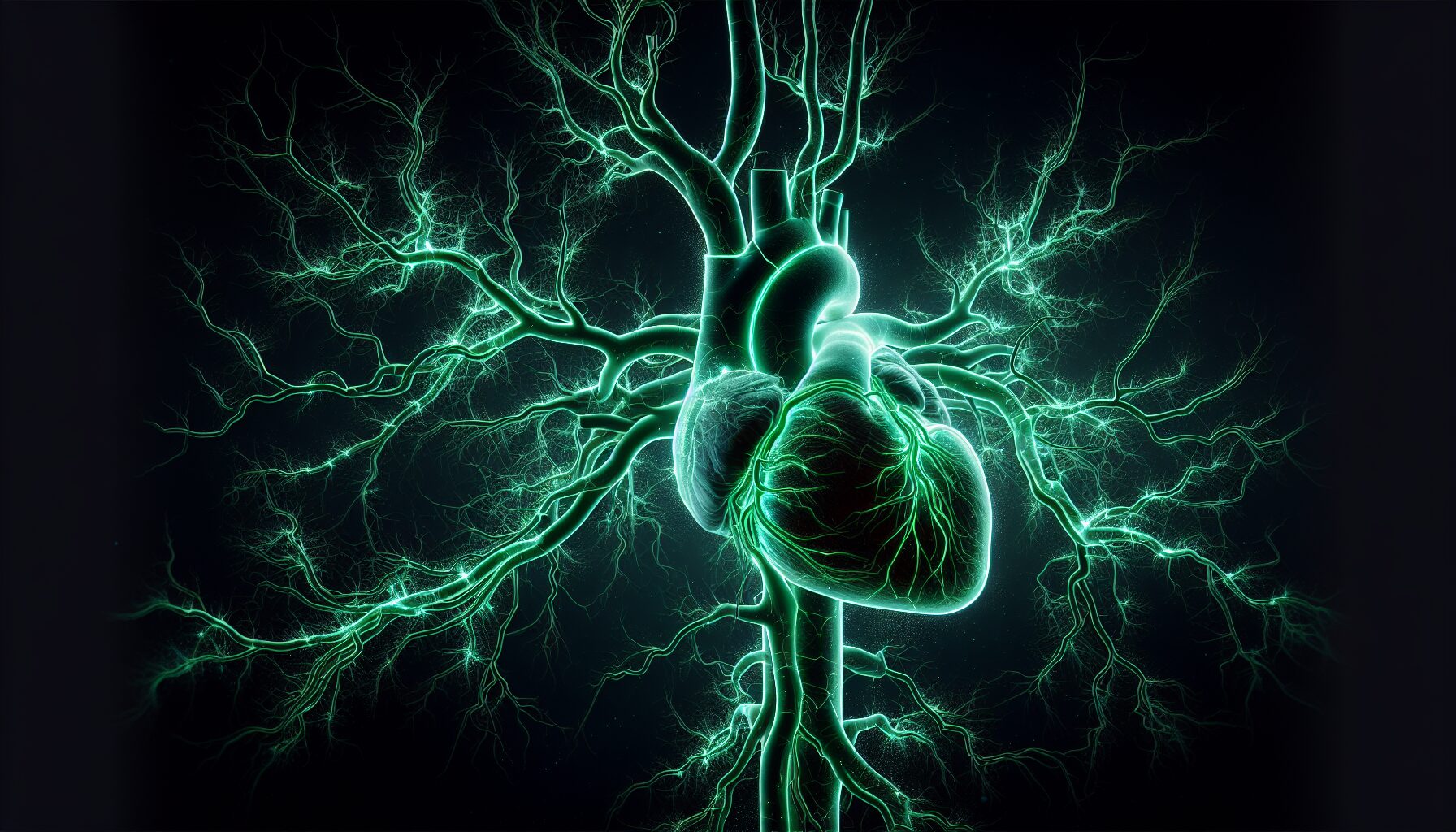
Salvianolic Acids Of Sage Leaves And How They Effect Our Health
Salvianolic acids form a large family of diverse compounds which may influence our health in various ways.
You can find high quantities of salvianolic acids in sage leaves known as Salvia officinalis and the Chinese medical preparation from roots of Chinese Red Sage known as Danshen. Danshen is revered for possible healing attributes for issues of the heart and circulatory system. Danshen is clinically prescribed for treatment of individuals who suffer from strokes and has been shown to reduce blood pressure.
Salvianolic acids are a group of phenolic plant compounds. They form within plants from combinations of caffeic acid and salvianic acid. There are various salvianolic acids because of different combinations between these two compounds. Current research shows there could be 10 different salvianolic acids.
This shows how diverse plant evolution is and how different plants we may never have heard of could offer health supportive or medical properties. Some of the most well researched effects of salvianolic acids include antioxidant support, influences on cardiovascular and neurone health.
Research currently shows that salvianolic acids may prevent blood vessel inflammatory damage or atherosclerosis which is a core risk factor for strokes. Salvianolic acids have an antioxidant capacity because of their phenolic structure.
Here the influences of salvianolic acids on various systems will be considered to show possible health effects of consuming foods or extracts which contain salvianolic acids.

Salvianolic Acids
Salvianolic acids are formed in a similar way to rosmarinic acid. Rosmarinic acid is one of the most potent antioxidant compounds found in the plant kingdom. You can read our article on rosmarinic acid here.
Rosmarinic acid converts into salvianolic acid B. The combinations of salvianolic acids can have very different forms and so will have slightly different effects within the body. Salvianolic acids are water soluble and so are thought to be more readily absorbed into the body. Salvianolic acids A and B both share the core structure of rosmarinic acid.
Currently salvianolic acids are most well understood as part of the traditional Chinese herbal medicine called Danshen. Danshen is the root of the Chinese Red Sage plant. The top half of this plant is potentially poisonous but the root is considered to be safe to be used in Chinese medical treatments. You also find salvianolic acids within green sage leaves too.
Salvianolic acid B is found in other sage species and diverse salvianolic acids are more typical of Danshen sage root extracts. You can find salvianolic acids L, I and K in green sage which may add to the total antioxidant content of sage leaves. There is about 200mg of salvianolic acid per 100 grams of sage leaves. Salvianolic acid A and B could have stronger antioxidant effects than vitamin C on certain oxidative molecules.
Salvianolic Acids And Cardiovascular Health
Danshen is thought to offer revitalizing effects on our heart and circulatory system and has been used for many years. This includes the vascular or blood vessel network of the brain. Studies also show that salvianolic acids could support the health of other organs such as the kidneys and liver.
Salvianolic acids and particularly salvianolic acid B is a main bioactive of Danshen as abundant water soluble compounds of the root. Salvianolic acids have a strong antioxidant capacity and this mirrors the known antioxidant abilities of Danshen.
Danshen salvianolic acids A and B could promote healthy blood circulation and congestion in individuals who have cardiovascular issues. Salvianolic acids could reduce systemic inflammation in these individuals to reduce risk of worsened inflammatory damages.
They may influence blood vessel cell signalling in a way that reduces systemic inflammation including the production of inflammatory cytokines. Studies have found that salvianolic acid A could support blood vessel surface cell health and their resistance to damage. Salvianolic acid is also used in Chinese medicine for asthma and could support inflammatory or allergic reactions in some cases.
Salvianolic acids may reduce hypertension in some blood vessels as part of their bioactivities. The strong antioxidant capacity of some salvianolic acids may contribute to heart protective activities following the blockage of blood vessels. Salvianolic acid A in particular has been shown to have strong anti thrombus effects and so may be important for possible prevention of atherosclerosis. Salvianolic acids could also protect the heart muscle from oxidative stresses and LDL from oxidative damage.
These are all core risk factors for cardiovascular diseases. Research therefore supports salvianolic acids as having possible benefits in protecting individuals who are at risk of certain cardiovascular issues.

Salvianolic Acids And Brain Health
Salvianolic acids are also thought to be supportive of neurone or nerve cell health in addition to heart health. A healthy supply of blood to the brain is really important for brain health and salvianolic acid rich extracts should therefore naturally encourage brain health. Salvianolic acid B shows potential as a treatment for vascular dementia.
Research also shows that Danshen extracts which contain large amounts of salvianolic acid could protect areas of the brain including the forebrain through other means. There is a possibility that salvianolic rich extracts could reduce excitotoxicity within the brain. Excitotoxity is one means of the neuro or brain toxicity of some artificial sweeteners.
Essentially salvianolic rich extracts could inhibit oxidative stress build ups and reduce neurotransmitter chemical overloads which could cause extensive nerve or brain cell death. Antioxidants such as salvianolic acids could be protective of brain health. Salvianolic acid B seems to have strong effects against oxidative molecules in relation to protecting brain cell health.
There is also a possibility that salvianolic acids A and B could support sufferers of Alzheimer’s disease. This is because of antioxidant effects and a possible prevention of Aβ protein accumulation in the brain which influence this disease. Inflammation reducing effects within the brain could also support mitochondrial health and further influence brain health.
Salvianolic acid B may also promote the growth of neuronal stem cells which would assist with brain health and injury recovery. Some studies have found that salvianolic acid B is able to cross the blood brain barrier and support nerve cell development.
Taken together extracts rich in salvianolic acids could really support brain health with various systemic roles yet to be explored by researchers.

Salvianolic Acids And Cancer
Current research also shows that Danshen could have effects against cancer development. Some researchers have noticed that Danshen root extracts could be preventative of cancer growths and this could be because of salvianolic acids. Researchers found that salvianolic acid A could prevent or block tumor growth in a preclinical setting. Salvianolic acid A may mildly prevent cancer blood vessel formation.
A rapid formation of blood vessel networks is a really important part of cancer cell death evasion and tumor growth. Extensive blood vessel networks are able to be supply out of control cancer cells with nutrients very quickly. This is a really interesting development for cancer preventative research. Salvianolic acids also show potential as anti virals and salvianolic acid B could have some wound healing properties as well.
Salvianolic acids are at the forefront of wellness research and show a lot of potential as strong antioxidants which could support various aspects of our health. Most of the focus has been on cardiovascular health but salvianolic acids could also influence cancer development for example.

Summary
Salvianolic acids are part of group of diverse antioxidants found in high amounts in sage plant species. These include the roots of Chinese Red Sage or Danshen and green sage leaves.
Danshen is used as a traditional Chinese medicine for heart and cardiovascular support. Danshen root has been shown to be able to reduce blood pressure and is often used to support individuals who have suffered from strokes.
Modern research has revealed that this Sage is rich in salvianolic acids which may have other health benefits such as support of brain health and tumor prevention. A lot less is known about the salvianolic acids of green sage but they are abundant in specific salvianolic acids.
Salvianolic acids are related to and shares properties with rosmarinic acid. Salvianolic acids are strong antioxidants. Some studies show their effects on some oxidative molecules could be stronger than vitamin C.
Salvianolic acids A and B may support inflammation reduction in blood vessels via antioxidant activity and resulting cell signal changes. Salvianolic acids could also strengthen resistance of blood vessel surface cells to damage. These effects of salvianolic acids would have benefits for the reduction in risk of cardiovascular diseases or issues and mirrors findings from research on Danshen.
Salvianolic acids are also thought to be able to support the health of nerve cells through antioxidant protection. Salvianolic acid B shows potential as a treatment for vascular dementia and other salvianolic acids could share benefits in supporting cognitive health. They could also reduce brain excitotoxicity from toxins and guard neurone stem cell growth.
Overall salvianolic acids carry some unknowns yet to be explored but the research shows that these antioxidant compounds could have benefits in protecting brain and heart health.
For more interesting articles see the main articles page below.





